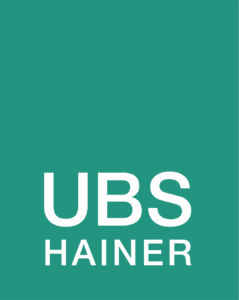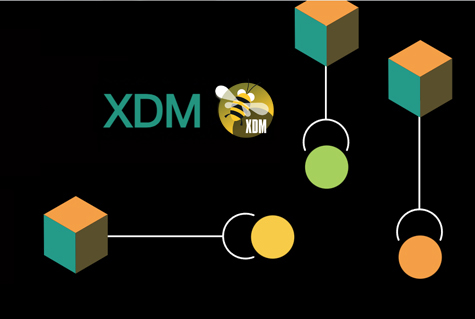In today’s software development landscape, the ability to quickly and competently respond to new technical requirements and social developments is a crucial success factor for providing consistent customer value amid dynamic changes.
UBS Hainer has embraced this challenge and recently achieved a significant milestone: XDM is now fully accessible – a step that not only meets legal requirements but also opens up new user groups and improves overall usability. This article explores what accessibility means in concrete terms, what added value it creates, and how it was technically implemented.
What Does Accessibility Mean in Software Development?
Accessibility in software development means that people with various disabilities – whether visual, hearing, or motor impairments – can use the software with as few restrictions as possible. Specifically, this includes enabling people with severe visual impairments to have content read aloud by screen readers and then interact with the application. Equally important is full keyboard or voice control when users cannot use a mouse.
The guidelines for this are defined in international standards such as the WCAG (Web Content Accessibility Guidelines) and DIN standard 301549. Accessible software has long been mandatory in various IT sectors of federal public administration. With the Barrier-Free Accessibility Strengthening Act (BFSG), effective June 28, 2025, the obligation for digital accessibility will be significantly expanded – including to the private sector.
The Added Value of Accessible Software
The implementation of accessibility brings numerous advantages beyond mere legal compliance:
a) For People with Disabilities:
Accessible software enables people with disabilities to use digital offerings unrestricted and independently. This allows them equal participation in social and professional life regardless of their individual limitations or technical capabilities.
b) For All Users:
A user interface optimized for accessibility benefits all users. The “cleaner” design, improved structure, and well-thought-out keyboard navigation enhance general usability. Practical functions like copy and paste of screen contents also work much more reliably due to the structured preparation.
c) For Customers and Organizations:
For many customers, especially in the public sector, XDM solves a pressing regulatory problem. As accessible software becomes more prevalent and increasingly needs to comply with legal requirements, UBS Hainer offers an immediately deployable solution for test data procurement with its certified solution.
For example, if insurance companies want to design their application systems to be accessible and have them practically tested by testers with disabilities, they can use the XDM test data shop for test data procurement in an accessible way to then test the functions of their newly developed software in a practical manner. At the same time, they can use the XDM features as a practical reference for developing their own accessible software.
Technical Implementation
The subsequent implementation of accessibility into XDM, which has been successfully developed for years, was a complex undertaking that was systematically executed across teams within six weeks:
a) Expert Analysis:
To ensure optimal results, UBS Hainer worked with external consulting firm Imbus AG, an experienced solution partner for professional testing and intelligent quality assurance of software. The entire application was checked for compliance with relevant accessibility guidelines, resulting in a detailed audit report that identified specific problem areas and necessary measures.
b) Structured Implementation:
Based on the audit report, the approximately 80 identified findings were systematically addressed. XDM’s modular structure with clearly separated backend and frontend components made it easier to focus on the relevant elements of the user interface.
c) Agile Development and Quality Assurance:
Further collaboration with Imbus took place in a tight two-week rhythm. Implemented changes were regularly reviewed and improved when necessary.
Core Aspects of Technical Implementation:
- Screen Reader Compatibility: The user interface was structured so that screen reader apps can correctly capture and read out content.
- Contrast Adjustments: Color contrasts were optimized for people with visual impairments.
- Symbols Instead of Colors: To ensure clear differentiation (e.g., for users with red-green color blindness), distinct shapes and symbols were implemented in addition to colors.
- Zoom Functionality: The application was optimized for magnification of up to 400%, with dynamic layout adjustment.
- Complete Keyboard Control: All functions can be operated via keyboard without using a mouse.
Implementing zoom functionality at 200% and 400% proved particularly challenging. This required ensuring that the interface would dynamically adjust at each magnification level without losing or making content inaccessible.
Accessibility as a Continuous Process
The introduction of accessibility is not a one-time project but a continuous process. Standards and guidelines are constantly evolving.
UBS Hainer has established internal documentation and processes to ensure that future XDM extensions and features also meet accessibility requirements. To guarantee this, automated tests were developed that signal when new functions don’t meet accessibility standards.
At UBS Hainer, the project was managed by Fabio Schmidt and Daniel Jandejsek. Fabio intensively researched accessibility topics and served as the primary contact with Imbus, coordinating the interface between requirements and actual implementation. Daniel was responsible for client presentations and developed numerous “before/after” graphics documenting the implementation and progress. The entire development team was sensitized to this topic during implementation.
This proactive approach shows that UBS Hainer views accessibility not as a tedious obligation but as a quality feature and opportunity to continuously improve their products.
Outlook: Accessibility as the Standard of the Future
Development in the field of accessibility clearly points toward increasing standardization. What is mandatory in the public sector today will become the standard in the private sector tomorrow – initially as a “should have” or “could have” criterion, but in the long term as a self-evident requirement for professional software.
The certified accessibility of XDM implemented by UBS Hainer demonstrates not only technical competence but also awareness of social responsibility and the ability to proactively respond to changing conditions.
The systematic approach – from analysis by external specialists through structured implementation to continuous quality assurance – demonstrates the professionalism and innovative strength of the company.
With XDM’s accessibility, not only can new markets and customer segments be opened up, but an important contribution is made to digital inclusion. The improved user-friendliness benefits all users and underscores UBS Hainer’s commitment to developing software that is not only functional but also accessible and future-proof.


